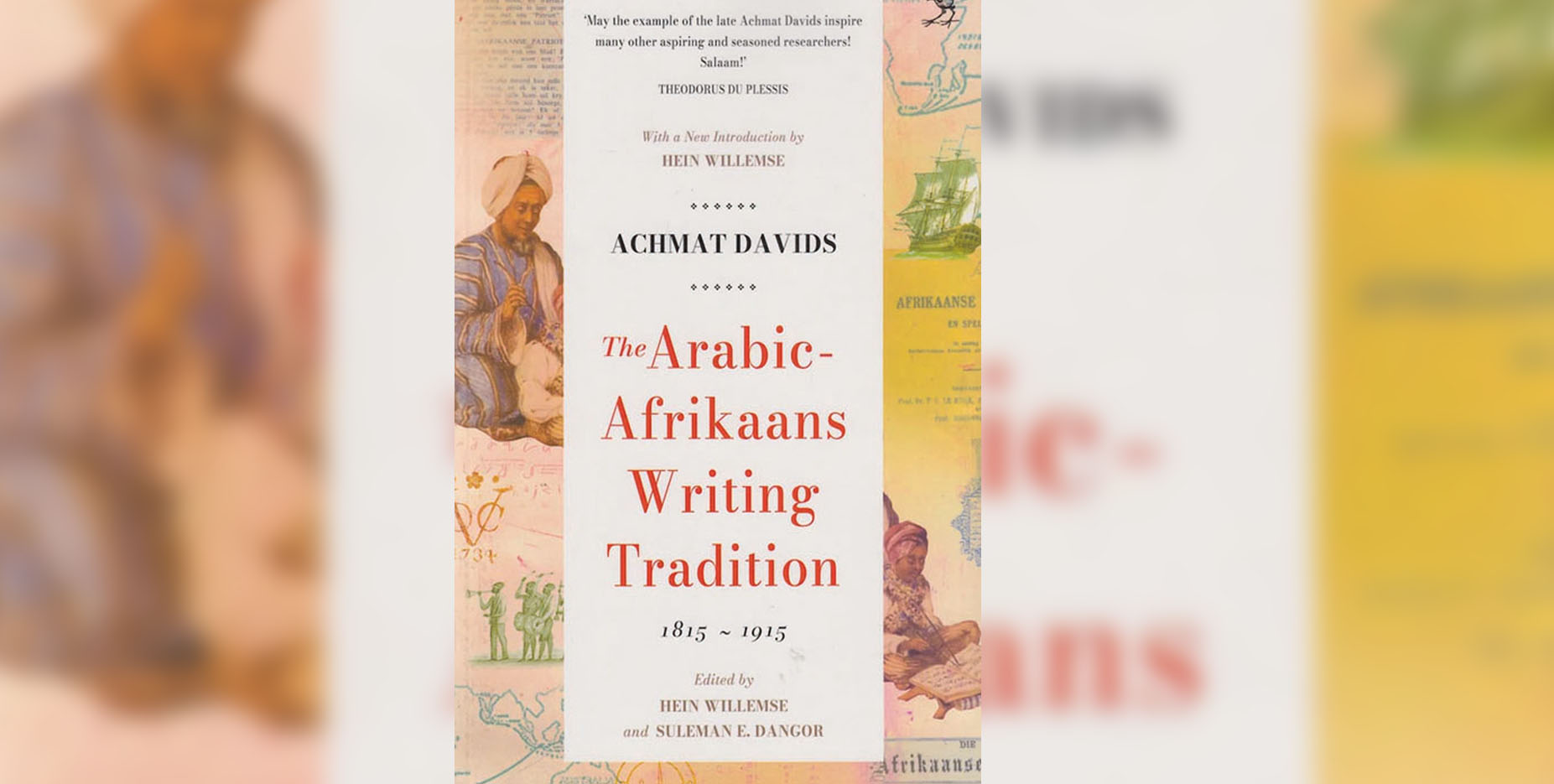
The Arabic Afrikaans Writing Tradition, 1815–1915 by Achmat Davids, edited by Hein Willemse, Suleman E. Dangor. Pages 334. 2023. Jacana Media
From the early seventies, Achmat Davids delved into the historical context, linguistic adaptation, and cultural implications of the use of Arabic in the writing of Afrikaans by Muslim slaves in the Cape. What he unearthed in his investigations firstly disrupted the normative views of cultural linguistics and, secondly, debunked the myth of a pure Dutch lingua franca and that “Afrikaans in fact resulted from the interaction of diverse people in the historic process of co-existence.” For Achmat, the “pure Dutch of Afrikaans was in itself an act of invention, a deliberate nationalist project of Dutchification.”
The intersection of Arabic and Afrikaans in the writings of Muslim slaves in the Cape Colony is a compelling narrative of linguistic adaptation, cultural preservation, and identity formation. This unique phenomenon, rooted in the colonial history of the Cape Colony, illustrates how marginalised communities navigate and negotiate their cultural and religious identities in the face of oppression.
The Cape Colony, established by the Dutch East India Company in 1652, became a melting pot of various cultures and languages due to its strategic position along maritime trade routes. Among the diverse groups settling in the colony were enslaved individuals and political prisoners brought from regions with significant Islamic influence, such as Southeast Asia, India, and parts of Africa.
These Muslim slaves, though forcibly relocated and subjected to harsh conditions, retained their Islamic practices and cultural heritage.
Islamic practices were deeply ingrained in the lives of these slaves with Arabic, the liturgical language of Islam, used in daily prayers, religious education, and community life. Despite the colonial authorities’ efforts to control and suppress non-European cultures, these Muslim slaves maintained their religious traditions and found ways to express their cultural identity within the confines of their new environment.
As the linguistic landscape of the Cape Colony evolved, Afrikaans began to emerge as a distinct language from Dutch, spoken by both the settlers and the enslaved population. Afrikaans developed from the Dutch dialects spoken by the European settlers, but it also absorbed elements from other languages, including Malay, Khoi, and indigenous African languages. For the Muslim slaves, Afrikaans represented a practical means of communication in their daily lives.
The use of Arabic script to write Afrikaans is a significant linguistic adaptation. Arabic script, deeply rooted in Islamic tradition, was utilised by the Muslim slaves to write in Afrikaans, creating a unique scriptural form. This practice allowed the slaves to bridge their religious and cultural heritage with the evolving local language. It also enabled them to preserve and transmit their religious teachings and cultural narratives while adapting to their new linguistic environment.
The integration of Arabic script into Afrikaans can be seen as both a practical and symbolic act. Practically, it allowed the Muslim community to use a familiar script for their religious and everyday communications in Afrikaans. Symbolically, it represented a form of resistance against colonial suppression, a way to maintain their cultural and religious identity in the face of adversity.
For Achmat, the use of Arabic script in Afrikaans writings was more than a mere linguistic adaptation; it was a cultural and religious assertion. It reflects how the Muslim slaves navigated their complex identity within a colonial framework that sought to marginalise and suppress non-European cultures.
By using the Arabic script, Achmat contends, the Muslim slaves preserved their Islamic heritage and religious practices. This adaptation allowed them to continue their religious education and community activities in a manner that was consistent with their cultural values. The preservation of Arabic script in writing Afrikaans texts ensured that religious teachings remained accessible and relevant to the Muslim community in the Cape.
The continued use of Arabic script signified the importance of Islamic practices in the lives of Muslim slaves. It was a way of asserting their religious identity and resisting attempts by colonial authorities to undermine their faith. Arabic script in Afrikaan’s writings became a symbol of religious resilience and defiance.
The practice also demonstrated the process of cultural integration. The Muslim slaves adapted to the new linguistic environment while retaining key aspects of their cultural and religious heritage. The use of Arabic script illustrated how cultural elements were recontextualised and integrated into new environments.
The Arabic Afrikaans Writing Tradition is a meticulously researched and definitive history of how marginalised and enslaved Muslim communities navigated their identities under oppressive conditions in South Africa under Dutch colonial rule. Davids points out that this linguistic adaptation reflects the resilience of the Muslim community in preserving their cultural and religious heritage while adapting to the realities of colonial life. The integration of Arabic script into Afrikaans writing is a testament to the dynamic interplay of language, religion, and identity, revealing the complex ways in which individuals and communities negotiate their place within broader socio-political contexts.
This book transcends simple historical and linguistic analysis. It offers deep insights into language as a form of resistance. Achmat, according to the late South African Minister of Justice, Abdullah Omar, was “more than just a person; he was an institution. He helped expose the falsification of history, especially in the southern part of South Africa. He helped restore pride in our history.
The Arabic Afrikaans Writing Tradition is a compelling work that delves into how language functions as a tool of empowerment and oppression within the context of South Africa’s diverse and complex linguistic landscape. Davids sheds light on the historical and socio-political dimensions of language and how language influence’s cultural identity and social dynamics. This is an invaluable resource for anyone interested in linguistics, social justice, religion, resistance, and the transformative power of language.
Mahomed Faizal